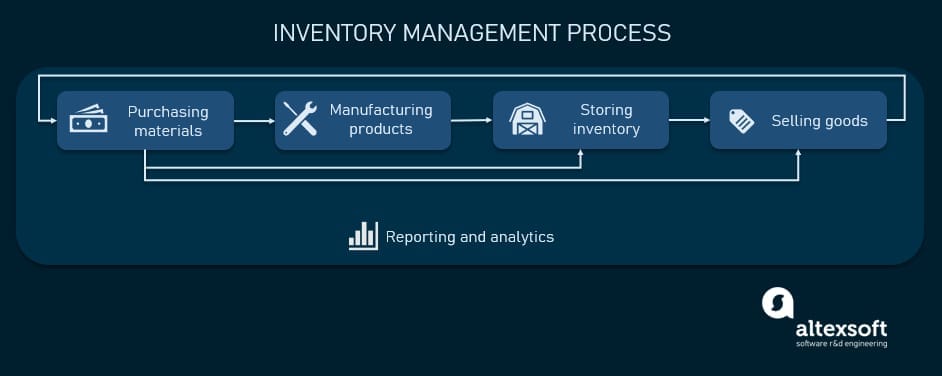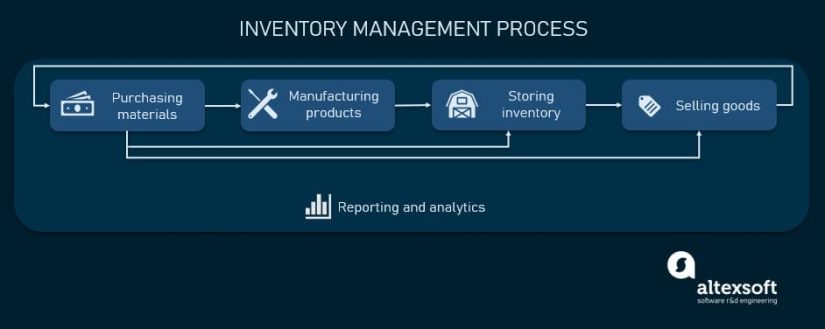
# How an Inventory Management App Can Revolutionize Your Business
## Introduction
In the rapidly changing business landscape of today, effective inventory management is not just beneficial—it’s essential. A recent report indicates that businesses are losing around [$1.75 trillion every year](https://www.lightspeedhq.com/blog/what-is-inventory-management/) due to ineffective inventory management strategies, such as overstocking, understocking, and waste.
Here is where the significance of an inventory management app comes into play. By utilizing technology, businesses can optimize their inventory processes, reduce losses, and substantially boost their profitability. Thanks to the emergence of advanced development tools and platforms, creating an [inventory management app](https://retool.com/templates/inventory-management) has become more straightforward, allowing businesses to develop tailored solutions that fit their unique requirements.
In this article, we will examine how an inventory management app can assist businesses in reducing losses, enhancing operational efficiency, and maximizing profits.
## Real-Time Inventory Tracking: The Secret to Precision
One of the primary advantages of an inventory management app is its capability for real-time stock tracking. Conventional inventory management techniques—like manual stock counts or spreadsheet records—are susceptible to human errors, leading to discrepancies in inventory. These inaccuracies can cause overstocking, which ties up capital, or understocking, which leads to lost sales opportunities.
An inventory management app offers immediate updates on inventory levels, enabling businesses to efficiently monitor and confirm available stock. Whether managing a small retail store or a large warehouse, real-time tracking allows businesses to detect stock shortages, reorder timely, and optimize their supply chain operations.
Moreover, real-time tracking boosts flexibility. It empowers businesses to respond swiftly to demand changes or supply chain disruptions, preventing stock outages while taking advantage of rapid shifts in market conditions.
## Cutting Waste Through Enhanced Demand Forecasting
Inventory waste is a significant financial burden for numerous businesses. Overstocking perishable items can cause spoilage, while manufacturing too many non-perishable goods leads to unsold inventory that occupies valuable storage space.
An inventory management app addresses this challenge by integrating advanced [demand forecasting](https://www.netsuite.com/portal/resource/articles/inventory-management/demand-forecasting.shtml) features. By examining past sales data, customer demand patterns, and seasonal trends, these applications offer precise inventory forecasts. Consequently, businesses can make informed purchasing choices, procuring only what is necessary.
As a result, companies can avoid excessive stock buildup, cut waste, and maintain ideal inventory levels that correspond with market demand—ultimately optimizing cash flow and increasing profitability.
## Optimizing Operations for Enhanced Efficiency
Poor inventory management leads to unnecessary costs and wasted labor. Employees who spend extensive time manually counting stock or searching for misplaced items could be more effectively utilized in other productive areas of the organization.
An inventory management app eliminates these inefficiencies by automating processes. Features like barcode scanning, automated restocking, and centralized data management improve inventory visibility and tracking across various business locations. These capabilities enhance operational efficiency while considerably lowering human errors.
By optimizing inventory management workflows, businesses can conserve valuable time and resources, allowing staff to concentrate on improving customer experience, boosting productivity, and catalyzing business growth.
## Minimizing Unsold Stock and Enhancing Profits
Unsold stock—products that linger in storage—poses a financial threat for businesses. It ties up capital, occupies warehouse space, and often leads to markdowns or disposal, resulting in revenue losses.
An inventory management app can help avert this situation by identifying slow-moving items before they turn into dead stock. These applications offer insightful analytics on which products are not performing as expected, enabling businesses to take proactive measures.
Firms can adopt strategies such as product bundling, offering discounts, or [modifying purchasing strategies](https://thekickassentrepreneur.com/buying-eth-a-good-investment/) to move stagnant inventory. Taking these proactive actions enhances cash flow and profitability, ensuring that inventory investments drive business growth rather than become a financial liability.
## Boosting Customer Satisfaction and Loyalty
Customer satisfaction is crucial for business success. A significant frustration for customers is finding that their desired product is out of stock. Simultaneously, overstocking can trigger excessive markdowns, impacting profit margins.
A well-structured inventory management app ensures that in-demand products are consistently available while efficiently managing slow-moving inventory. This equilibrium helps businesses maintain customer satisfaction without incurring unnecessary overstocking.
Furthermore, automated inventory tracking enables quicker order fulfillment and reduces delivery errors. Organizations that offer dependable service foster customer trust, promoting long-term loyalty. Satisfied customers are more likely to make repeat purchases and recommend the business, leading to increased revenues.
## Data-Driven Insights for Sustainable Growth
One of the most advantageous features of an inventory management app is its capacity to deliver actionable insights. These applications produce comprehensive reports on inventory trends, sales performance, and customer behaviors, equipping businesses with critical data for informed decision-making.
